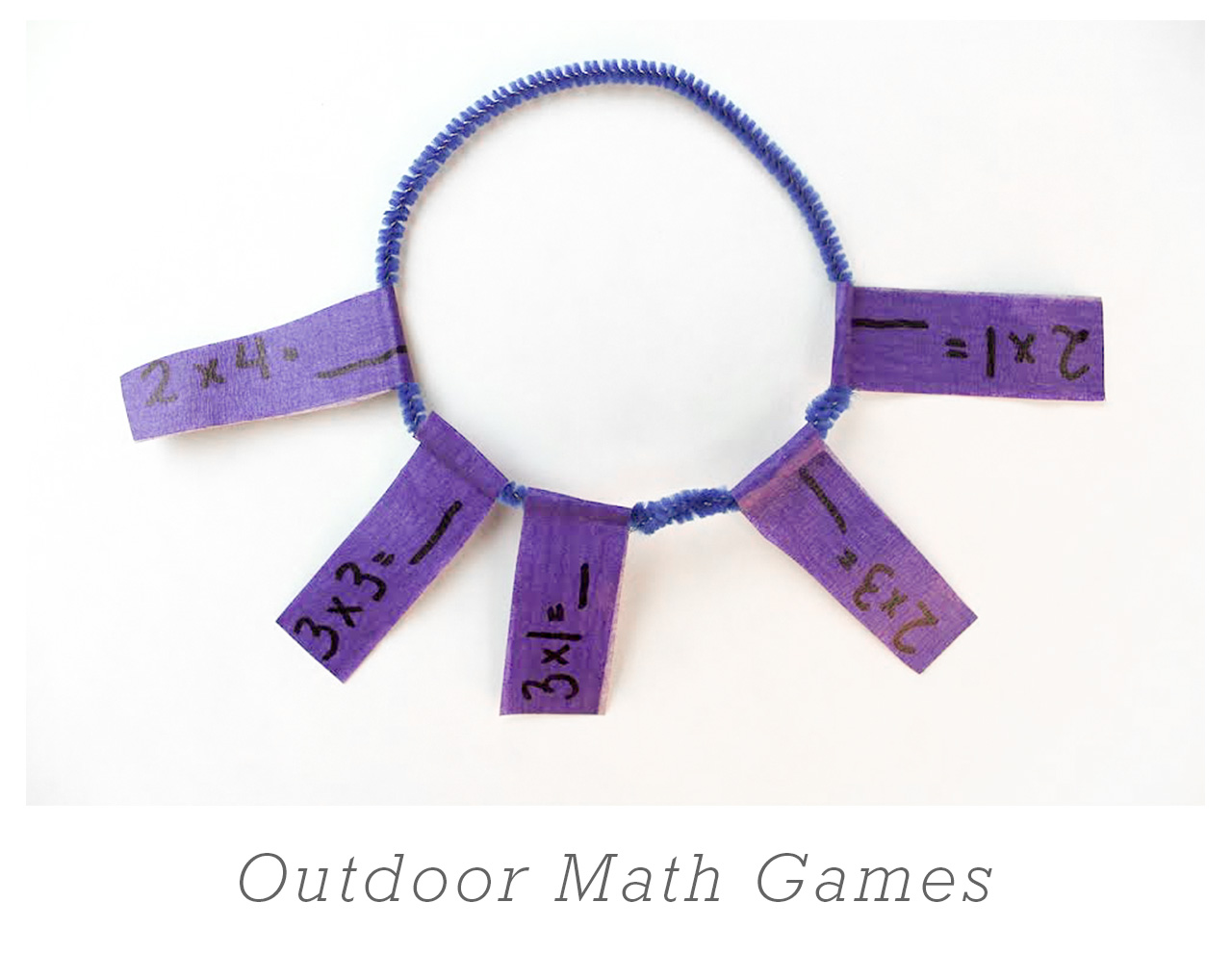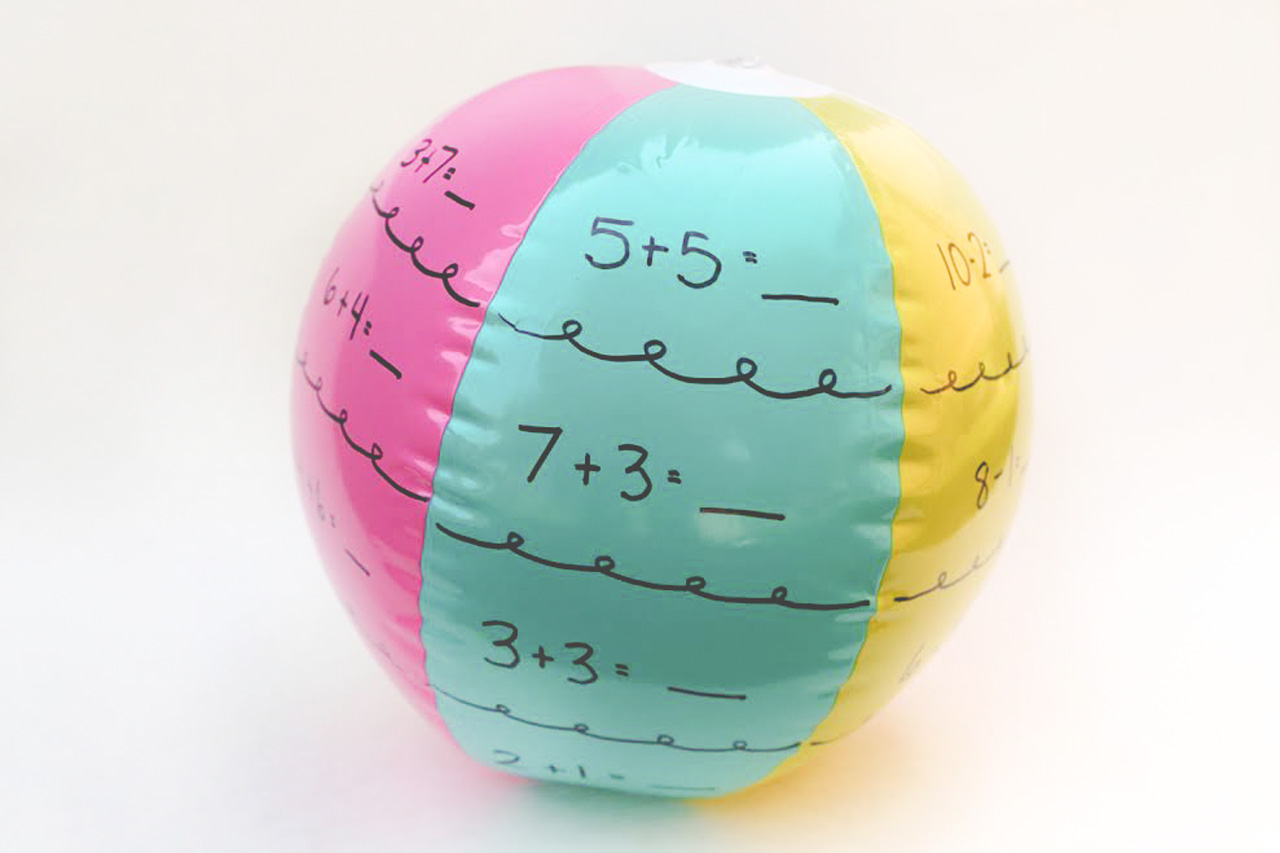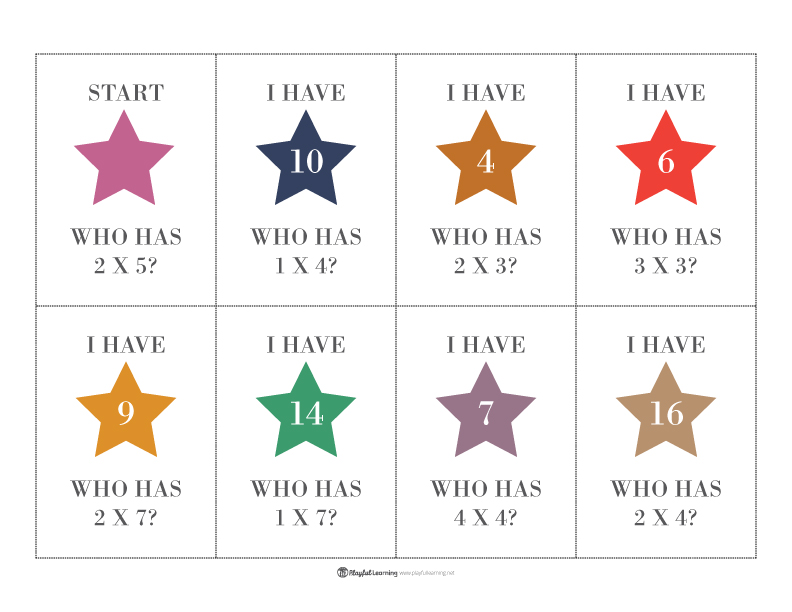Outdoor Math Games
 Summer is often when we all want to be outside to enjoy the sun, play with friends and explore nature. Fun in the sun can also coincide, playfully, with keeping up our math skills. The games and activities below can be played both outside and inside. The key is that they are portable and can be enjoyed in both environments.
Summer is often when we all want to be outside to enjoy the sun, play with friends and explore nature. Fun in the sun can also coincide, playfully, with keeping up our math skills. The games and activities below can be played both outside and inside. The key is that they are portable and can be enjoyed in both environments.
Bracelet Fact Game:
Materials: pipe cleaners, colored tape or thin post-it notes
This activity helps children to remember basic facts in an area of your choice. Help your child or group of students decide on facts to practice (addition, subtraction, multiplication or division). Start with five to learn and practice. These should be facts that the child knows how to figure out but needs to gain in recall speed.
Activity: To play this as a game with two players, have each player play with the same facts on their bracelet. One player keeps the facts on the questions and the other player turns hers’ over to the answers. The first player asks a question or gives an answer and the other player locates it on her bracelet. For example, if player one calls out 5 + 5, the second player finds the answer 10 on her bracelet and calls it out. Starting with the answer is fun too, where the answer of 10 is called out and the other player locates the question 5 + 5. Children can also play on their own by quizzing themselves and checking answers.
Beach Ball Facts:
Materials: large beach ball, sharpie pen
This game can be played with as little as one player to a whole large group of players. Before playing write math facts on the spaces of a beach ball. Choose facts based on your child’s needs. To play alone, the player simply tosses the ball up in the air, catches it, and answers the question closest to him on the beach ball. If playing with other children, the ball is tossed back and forth and each player answers the question closest to him when he catches the ball. This game is easy to take with you and can be used in all different subject areas by simply changing the questions.
I Have, Who Has Card Game
Materials: I Have, Who Has card set (click on photo above to download)
This is another game that can be taken anywhere but does require a group of children. To play, pass out each child one or two cards, depending on size of group, and have them figure out the answer to their questions. Have students form a circle and the player with the start card begins. Students play until the player with the end card plays. Encourage children to answer quickly so that it becomes a fast paced, quick recall, game.
Hopscotch Counting or Facts
Materials: sidewalk chalk, and flat small sticks
I just taught my own children the game of hopscotch and we played for hours. In this version, it is played the same way as the original with a little twist in the labeling of the boxes. Instead of labeling each square with numbers one through ten, have your child practice skip counting. We labeled boxes by 2’s and 3’s to practice but you could decide on something different. Another fun idea is to start the first number higher, maybe 22, and then count by 2’s. Your boxes would be labeled: 22, 24, 26, 28, 30, 32, 34, 36, 38, and 40. Facts can also be written in the boxes with or without the answer. You could make boxes labeled 1+1 = 2, 2+2 = 4, etc. and have your child say the facts as he/she moves through the box.
Link: http://www.wikihow.com/Play-Hopscotch
Have fun!


